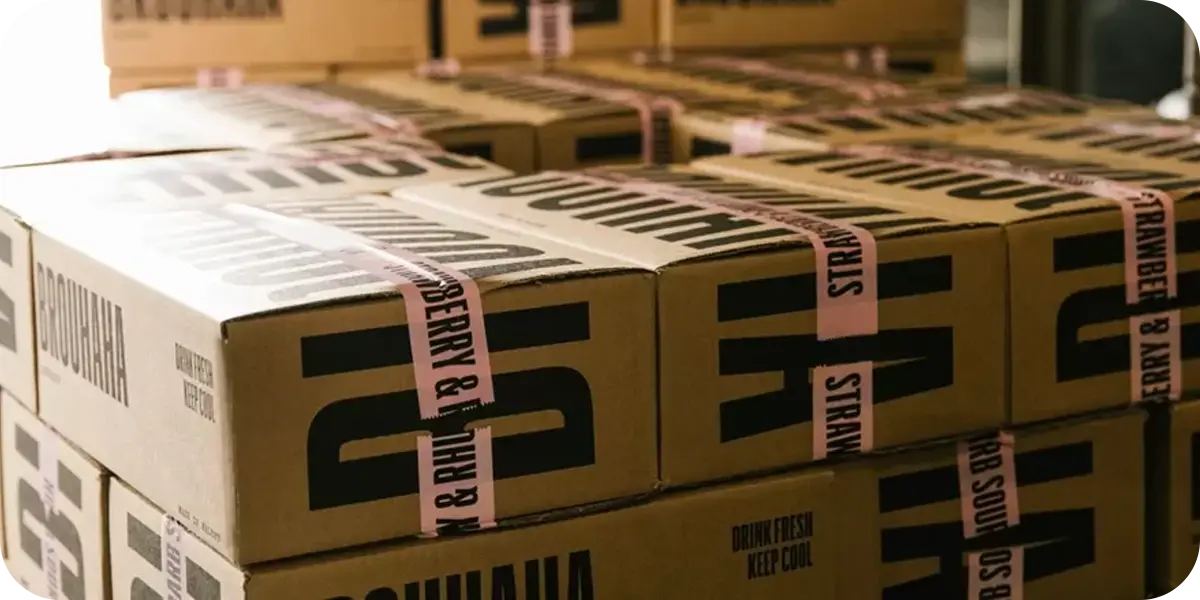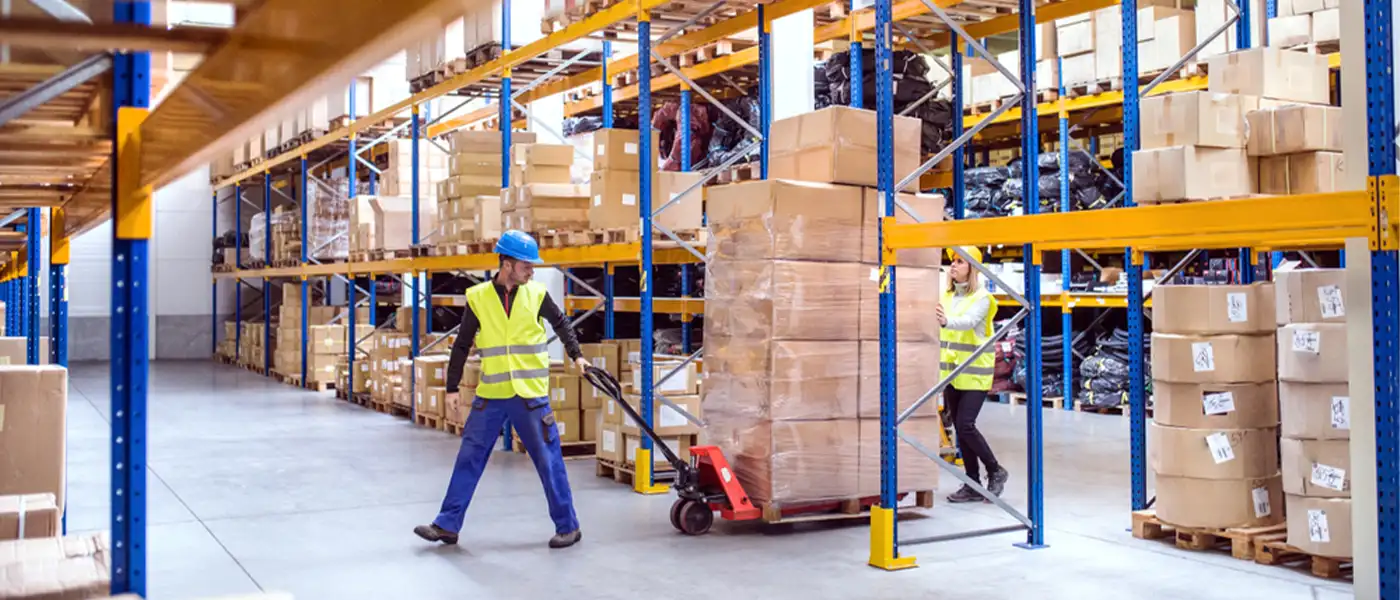Asia is the third-largest producer and exporter of coffee in the world. It rose 1.66% to 400K tonnes in 2022 and continues to grow. The demand for coffee is booming with exponential growth. Coffee lovers can agree that nothing can compare to a fresh, warm cup of coffee early in the morning or while enjoying the sunset.
Coffee has a special place in everyone’s heart, and it can be a great gifting idea to show your care. As the business goes, coffee has gathered more traction worldwide and has become one of the most popular and standard beverages. In 2021, around 166.63 million 60 KG bags of coffee were consumed; imagine the kind of significance it has among people!
Whether you are a roaster or simply looking to ship coffee to a customer, it is imperative to know the methods for shipping coffee that guarantees a safe and secure arrival. In this article, we will explore the step-by-step process of shipping coffee and some of the best ways to ship coffee beans both nationally and internationally.
How to Package Roasted Coffee
One of the essential things about shipping roasted coffee is maintaining its flavor and aroma while sending it to a customer or as a gift. Why is it so necessary to ship coffee carefully? Coffee beans are prone to get damaged during shipment if the air gets into the bag; it breaks and splits the bean.
To make things much more feasible for you, we have made a step-by-step guide on packaging coffee beans like a professional.
1. Choose the correct shipping boxes for coffee
Choose the most appropriate shipping boxes for coffee. The box should be 2-3 inches bigger than the bag so the packet has enough space for packaging. However, there should be no space between the shipping box and the bag to minimize the damage.
2. Use packaging supplies to secure your coffee
Once you are done packaging the material, use cushioning or soft materials to absorb all the shocks while transiting. You can consider using the following cushioning materials to pack coffee beans:
- Bubble wrap
- Packaging paper
- Packaging tape
If required, double the wrap based on how far the material has to go.
3. Seal the box and place the shipping label
This is the last step of packing the coffee bag. Seal the pack with strong adhesive tape and add the label to the front side of the package. These labels are also provided by 3PL shippers that help businesses cut shipping costs.
Best Practices for Shipping Coffee
Once you are done packing the coffee beans, you can move forward to look for the best ways to ship coffee hassle-free. We have listed some crucial points to consider when shipping coffee to customers.
Utilize shipping insurance
Shipping insurance protects the item from theft, damage, or loss. Some major courier services offer insurance of up to $100. For any start-up company, cutting and managing as much cost as possible is important to make the business more economical and profitable. Utilizing shipping issuance is the most thoughtful way to protect your product and business.
Packaging is vital for your coffee beans
As mentioned earlier, the essence of coffee lies in the aroma and taste of coffee beans. Therefore, it should be packed such that the essence of the coffee beans remains intact. You can do so by double-wrapping the packet and using the tape all over the box. There should not be any air space or holes in your box that can damage the beans.
Research any applicable duties and taxes fees
Before shipping coffee to your customers, you need to know that specific country’s importing or exporting duties. So before you ship coffee beans internationally, thoroughly research duties and taxes. Moreover, the company should also decide if they are going to bear the taxes or the receiver. Considering the business growth, you should bear the cost yourself to have a competitive edge.
Shipping Coffee Internationally – What You Need To Consider
Shipping coffee is a challenging task. In fact, like any other organic product, coffee beans should also be handled with care. Losing the flavor and aroma is the worst thing to experience as a customer and an entrepreneur. The worst that could happen is, throwing the damaged coffee in the dustbin or returning it to the origin country.
To avoid this scenario, there are certain factors you must consider. The first to take care of is the humidity level in your coffee. According to Jean Nicolas Wintgens’ book, the moisture content in your green coffee beans should be somewhere between 11-14%. Exceeding this percentage could cause pests and molds. Another important factor is temperature consistency. When the coffee bean is taken out of the fridge, the temperature changes, which could lead to a build-up of condensation within the pack. This could cause moisture rise and hence damage to the beans.
It is, therefore, crucial to understand and control the temperature using certain packing equipment to ensure the temperature remains consistent and doesn’t generate condensation.
Which is the best way to send roasted coffee beans internationally?
Shipping coffee beans internationally can be tedious as the pack has to survive the entire shipment journey. As a business owner, you should remember how you can maintain the freshness of coffee beans, from when they are roasted until the customers receive them. There are certain ways by which you can ship coffee.
Sea freight is the cheapest way to make your exports. However, it takes days to reach the end destination. The chances of losing the essence are pretty high. As for air freight, it is comparatively more expensive than sea freight, but it ships the package in no time. Moreover, shipping by air mail provides faster, more reliable, and smooth transportation.
Transporting Coffee: What To Consider
Sea Freight: Transporting Coffee By Sea
Sea shipping has always been a prominent way of transporting cargo from one destination to another. Sea transport, also known as maritime transport, has widely been used by many industries. One of the main reasons to utilize sea transport is its containerization, in which large containers are used to stack goods.
Coming to coffee shipment, many entrepreneurs rely on sea freight to ship coffee from one country to another. It is cheap, readily available, and allows vast transportation of goods. Though you might think that sea shipping takes days to reach the end destination, it is the best and most economical way of exporting green beans. It is cheap, readily available, and allows vast transportation of goods.
Roasted coffee has a reduced shelf life and has to be transported quickly. Air freight seems more feasible for roasters and doesn’t affect the quality. However, green beans just plucked from the farm have a longer shelf life, for which sea shipping is the most appropriate method.
However, the shipping containers have to be completely filled. Half-filled containers can accumulate heat, thereby increasing moisture content. Collaborating with other traders or exporters is the best way to fill the containers. With just a few bags, the container becomes super hot; therefore, the temperature becomes more stable once the container is full. Refrigerated containers are another option to control the temperature and moisture levels.
Air Freight: Transporting Coffee By Plane
Air freight rapidly transports coffee beans from one destination to another. It also provides efficient and uninterrupted distribution of roasted coffee. As we discussed earlier, green beans and roasted coffee have a lot of differences regarding shelf life, humidity, and temperature.
Roasted coffee is more perishable than fresh green beans. Therefore, entrepreneurs tend to transport the packet within a day or two. Because of air freight, low-volume containers are used, which doesn’t affect the plane’s weight. The smaller capacity plane can hold a minimum of 5-10 kgs of roasted coffee.
Businesses can freely opt for air freight if they have more capital to invest. Your packet should be vacuum sealed to give it extra precaution. You should also prevent the oxidation of coffee by escaping CO2 from the pack.
FAQs
Can I ship a bag of coffee?
Since coffee packets are small and heavy, one of the best ways to ship them is priority mail cubic at reasonable rates.
Which country is the largest importer of coffee?
The US imported $6.92 billion worth of coffee in 2021, making it the leading importer of coffee worldwide.
Can coffee beans be shipped?
Coffee beans can be shipped both domestically and internationally via the mail.
How long do coffee beans last in a package?
A sealed coffee bag can last for up to twelve months when stored in a dry, cool, and dark place, whereas the open bag is usable for up to a week.
What are the rules for shipping coffee?
The most common rules for shipping coffee are:
- It should be packed tightly
- It should be covered with bubble wrap, preferably double layer
- Roasted coffee should be transported as quickly as possible
- Green beans can take several days due to their extended shelf life







